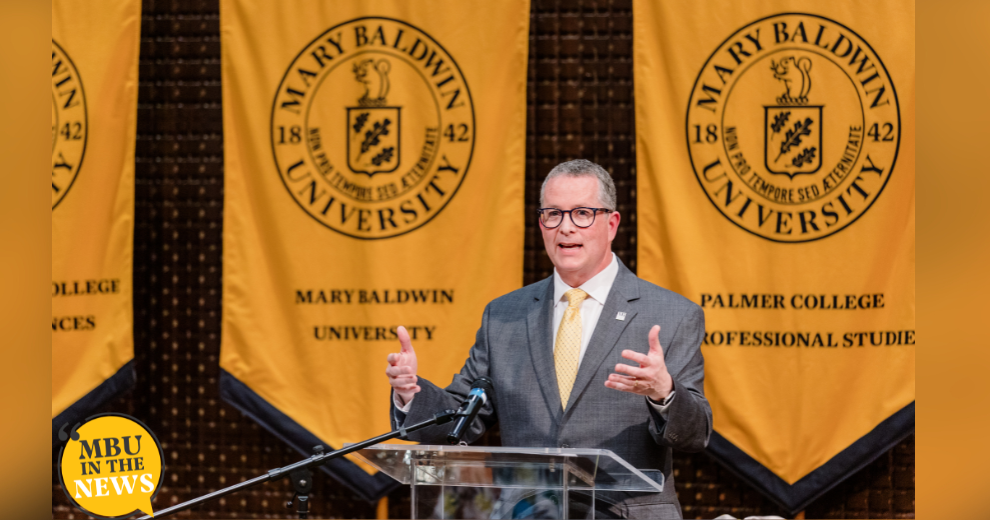
Mary Baldwin 2035 Strategic Planning Process

Mary Baldwin is kicking off the 2035 strategic planning process, and the community is invited to participate in conceptualizing the vision for MBU in the next decade and beyond.
Over the next three months, this process will engage faculty, staff, students, alumni, Trustees, and community members in listening sessions to gather ideas for the future of Mary Baldwin. The MBU Administration will analyze feedback from listening sessions and additional data to build a survey for distribution following spring break.
Timeline for Strategic Planning Process
Opportunities for gathering ideas, suggestions, and feedback from MBU stakeholders will be spread across the following phases:
- Phase 1: Gathering Input and Information (January – March 2024)
- Phase 2: Analyzing Data, Developing Categories and Themes (April – May 2024)
- Phase 3: Developing Plan Draft (June – July 2024)
- Phase 4: Feedback and Revisions (August – early September 2024)
- Phase 5: Approval and Prepare for Implementation (September – December 2024)
After the plan has been drafted, reviewed by the campus, and adopted by the Board of Trustees, implementation teams will deploy the plan.
We look forward to engaging with all stakeholders throughout this process.
Dr. Jeff Stein, president, charged a Strategic Planning Committee (SPC) composed of faculty, staff, students, alumni, and Trustees, who represent a diversity of experiences, roles, and perspectives.

Goal of the Strategic Planning Process
To engage all Mary Baldwin stakeholders in envisioning a distinctive and sustainable future that will drive our work to serve students and advance learning.
Context
Urgency and opportunity across higher education and at Mary Baldwin, including demographic changes, financial challenges, student success, skepticism regarding cost/outcomes, changing workforce, and role of technology/AI.
Mission
Mary Baldwin University empowers inclusive leaders to create lives of purpose and professional success in our changing world.

Charge to the Strategic Planning Committee
The strategic planning committee is charged with:
- Engaging Mary Baldwin stakeholders — students, faculty, staff, alumni, the Board of Trustees, families, community and institutional partners, and others — in order to:
- Gather input, feedback, and ideas and envision the direction for Mary Baldwin University in and beyond the next decade.
- Formulating themes and actions for the draft of Mary Baldwin’s next strategic plan, through an inclusive and iterative process that includes:
- Listening sessions and a survey for a broad range of constituents.
- Sharing updates and progress with the university community.
- Regularly asking for feedback from all stakeholders.
- Researching, considering, and addressing challenges and opportunities facing Mary Baldwin and higher education, including but not limited to topics and questions listed below and with the goal of achieving increased retention and graduation rates as well as financial sustainability in all operations and programs.
Time Frame and Timeline
The plan should anticipate the overall strategic direction of the University for the next decade, while creating objectives and action steps through 2030. A draft of the plan should be completed by August 2024 to be shared with campus constituencies and in preparation for a September 2024 Board of Trustees meeting.
Potential Questions for Consideration
- Student Success: How do we significantly advance retention and graduation rates, graduate school placement, and first destination employment and salary levels?
- Teaching and Learning: Mary Baldwin has always been known for excellent teaching and mentoring. How do we better embrace and support innovative and experiential teaching and learning, increased time on task and time with faculty, as well as high level mentoring? How will we include changes in technology and AI in our teaching and learning?
- Diversity, Equity, and Inclusion: What is the vision for the university in regards to diversity, equity, inclusive environment, and intercultural competency in the decade ahead?
- Academic Programs: How should we deliver our new academic portfolio at the undergraduate level (majors, meta-majors, minors and certifications, and general education core), and what new graduate and online programs should we offer to both meet demand and continue creating our distinctive niche? How will we advance a culture of lifelong learning?
- Students: How will the undergraduate, graduate, and online populations change over the next ten years; how will we attract, retain, and support those students; and how will we enhance campus resources, structures, programs, services, and interactions in order to improve campus climate, well-being, belonging, and student outcomes?
- Faculty and Staff: How do we maintain and advance our tight-knit community while enhancing the well-being, professional development, and work environment for faculty and staff?
- Athletics: What is the vision for student athletes in 2035 and how can the program be strengthened to enhance the student experience and community?
- Facilities: What are the University’s most pressing facility needs in the next decade?
- Enrollment and Advancement: In light of changing demographics and increased scrutiny on outcomes, how should Mary Baldwin manage growth? What level of endowment and reserves should we strive for? How do we best continue to focus on access at the undergraduate level? What revenue streams, grants, and partnerships should be considered to advance the University?
- Alumni: How can we more effectively engage with alumni and how can alumni engage with and enhance the future of Mary Baldwin?
- Reputation: For 182 years, Mary Baldwin has provided access and transformative education to underserved students, what is the vision for Mary Baldwin’s position in higher education? What should we be known for, and what should the university’s role be in helping to advance Staunton, Augusta County, and Virginia? What key partnerships with industry, non-profits, and government should be considered in order to advance our programs and reputation?